Trying to create real food kids in a goldfish cracker, chicken nugget, French fry world is no easy task, but it can be done, and the sooner you start, the easier it will be. In the U.S. kid food is the norm, but this isn’t the case around the world, and it certainly isn’t creating a generation of healthy kids.

In countries like Japan, France, Spain and Norway you will find kids eating mostly real food meals almost identical to what their parents eat. Once you begin to see the SAD (Standard American Diet) isn’t so standard, it may inspire you to make some positive changes in your family’s eating habits.
Here are some simple action steps you can take to get your kids eating more real food.
Cook Real-Food Meals as Often as Possible
In short, the SAD is high in sugar, processed foods and saturated fats. A good rule of thumb and probably the most powerful thing you can do is to eat homemade, real-food meals 90% of the time. The 90/10 rule. Cooking from scratch with whole foods, will increase nutrition and decrease additives like salt, sugar, saturated fats and preservatives.
It will also decrease any other undesirable ingredients in your food. Will there be busy seasons where you dip below dip below 90%? Sure, but I’m about to go over some time saving strategies for those seasons. When life is especially busy, utilizing shortcuts can help.
Some shortcut ideas might be grocery pick up, food prep, meal planning, the Instant Pot/slow cooker, Grocery pick up can be a gamble depending on what store you frequent, but I have been doing it for almost two years now (at the one store I trust). It really helps me have what I need when I need it. I do a pick-up every Monday like clockwork,
Food Prep and Meal Planning
My current food prep is pretty minimal, because this is not a super busy season for us, and I am home a fair amount of the time. How you go about food prep and meal planning will definitely depend on your personality and lifestyle.
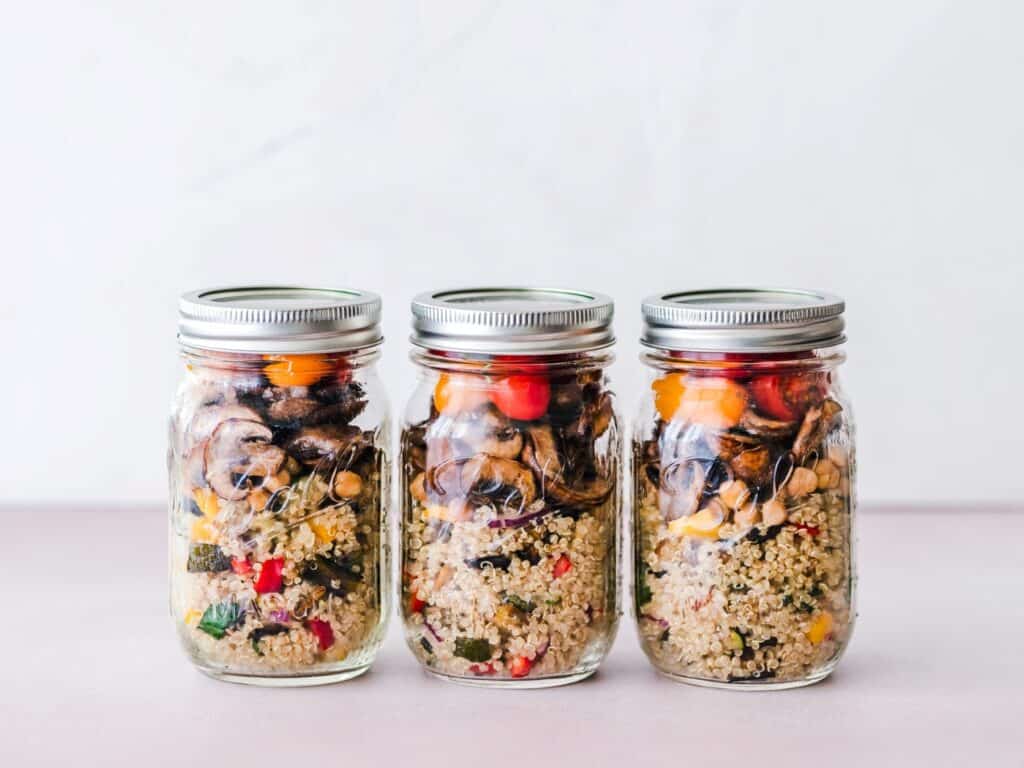
These days, I rinse and chop 2 large heads of romaine—some weeks I go ahead and add red onion, tomato and cucumber to have a BIG basic salad on hand. I pre-cook turkey sausage, fried eggs and/or muffins for quick breakfast options.
Check out my go-to low sugar chocolate chip muffin recipe that we all love. I also usually have a whole chicken ready that I either picked up (easy button) or cooked in the Instant Pot. Other ideas might be pre-chopping the veggies you plan to use that week or cooking and portioning out lunches.
As for meal planning, I typically come up with 2-3 meal ideas then cook a few staples rather than creating an extensive meal plan. I cook a giant pot of black beans, green beans and rice in my Instant Pot and create several meals around those dishes. Some weeks, I cook a large pot of oatmeal, a whole chicken or a dozen boiled eggs. If you prefer the slow cooker, it should work for all of these items minus the rice.
If you are serious about creating a detailed meal plan, you may want to check out the 100 Days of Real Food Meal Planner. While I have not tried this, I’m a fan of the blog and have noticed that it’s helped lots of readers. Whatever level of food prep and meal planning you do, there is no doubt that it can help feed you feed your family more real-food meals.
Skip the Kid Food
Often, when kids are little, they learn that if they protest they may get a food they prefer more. It’s usually something like mac-n-cheese, chicken nuggets, pizza or similar. As you become a real-food family, you won’t normally keep these items in the house.
You might still have those foods on occasion, but it can be helpful to start thinking of them as special treats rather than a staple on than weekly shopping list.
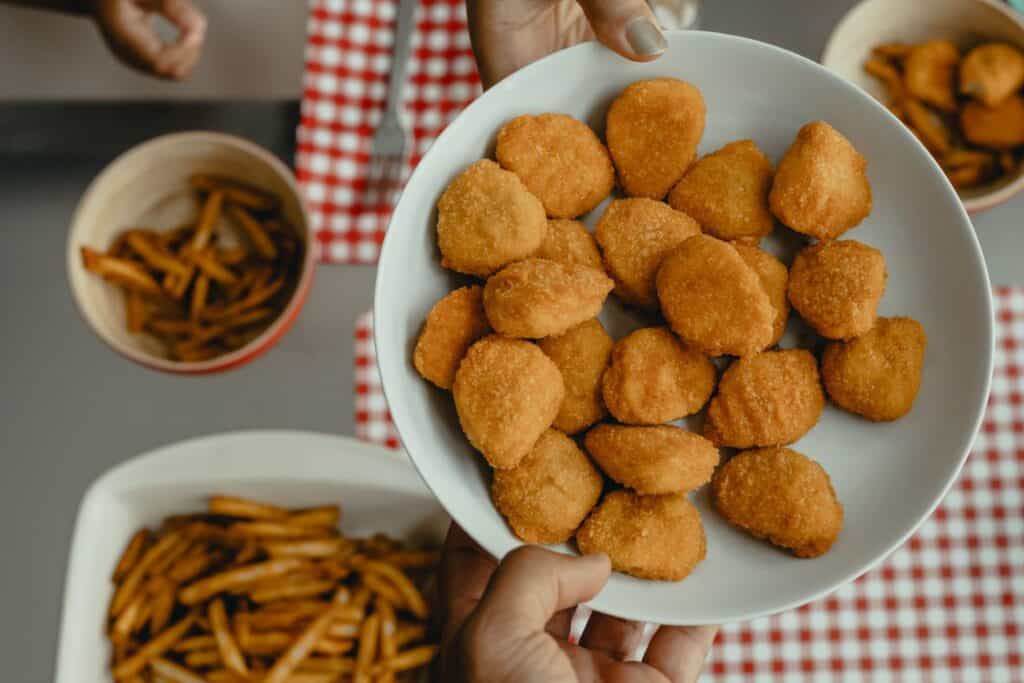
When those backups aren’t available, kids will adapt and be more willing to try new foods. If you’ve started a kid-food habit (most of us have at some point despite our best efforts) think about how to do a slow course correction. Once your home is stocked with mainly real foods, there won’t be a lot of alternatives.
It’s snack time, so, what’s it going to be? Nuts, apples, yogurt with berries? You want to be fresh out of junk food as often as possible. We’ll chat more on undoing existing habits later in the post.
I think it’s safe to say that that most kids naturally love snacky things! For example: my kids do not like whole apples, but they love thinly sliced apples :). They seem to love all things crunchy and bite-size. If you’ve got a reluctant eater on your hands, some fun real-food ideas might be: string cheese, homemade crackers, homemade granola, chopped fruit, small veggies with ranch dip or a fruit and yogurt parfait.
For the parfait, take plain yogurt and add a splash of maple syrup and vanilla. Lightly sweetening foods yourself dramatically cuts sugar. Layers and dips are often wins!
Let Your Kids Choose Their Veggies
Like most families, my kids are different! My son absolutely loves green smoothies—he has one almost every day. He consistently likes a handful of other veggies like green beans, avocados, corn, potatoes, lettuce, tomatoes, etc. He’s my more challenging child, so I’m really generous with those smoothies, He can talk me into one just about any time of the day.
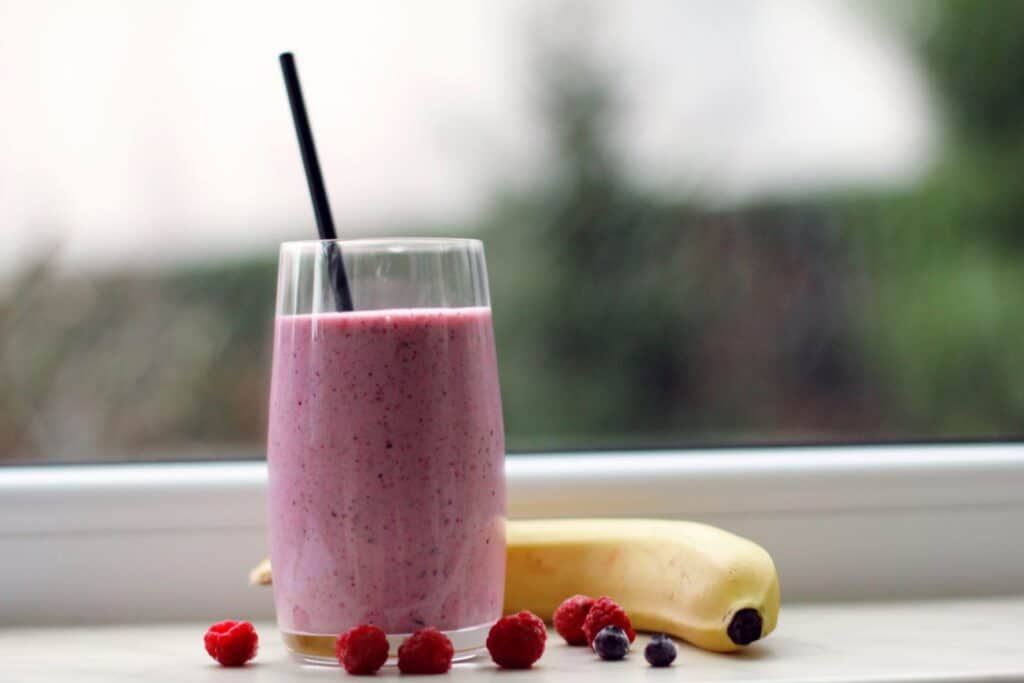
My daughter loved smoothies when she was younger, but they are not her thing now, so she usually chooses cooked veggies. Build on what they like. If your kids are into a certain veggie, it’s perfectly o.k. to cook that veggie three times per week no questions asked. Kids will cycle what they like so be ready to change right along with their preferences.
If toppings help, I’m here for it. Cheese, butter or my daughter’s favorite, a boatload of salt and pepper, might be just what they need to enjoy a veggie. My only rule is that you have to eat the veggie too … no picking off the toppings, ha! It’s also a good idea to try the veggies in different forms. My kids won’t eat kale, but they will eat kale soup (I was just as surprised as you may be). Broccoli is just o.k. for them, but they LOVE broccoli soup.
Assume Your Child Likes Every Food
This may seem silly but according to HealthLink British Columbia, children need to be exposed to a food somewhere between 12 and 30 times to truly decide if they like it or not. That’s a good enough reason for me to consider every day a new day when it comes to food! We can miss opportunities when we assume “Lily doesn’t like (fill in the blank), so I’m not going to bother.”
I say serve it like it’s the first time every time unless your child has a serious aversion to it. If I know they likely won’t eat it … say it’s the 20th try that always ends in “gross!” (e.g. my son with asparagus) maybe just offer a few pieces and preplan to eat his/hers.
You may be surprised at how this plays out over time. If you dismiss a veggie each time your kid tells you they hate it, you’re going to run out of veggies pretty darn fast.
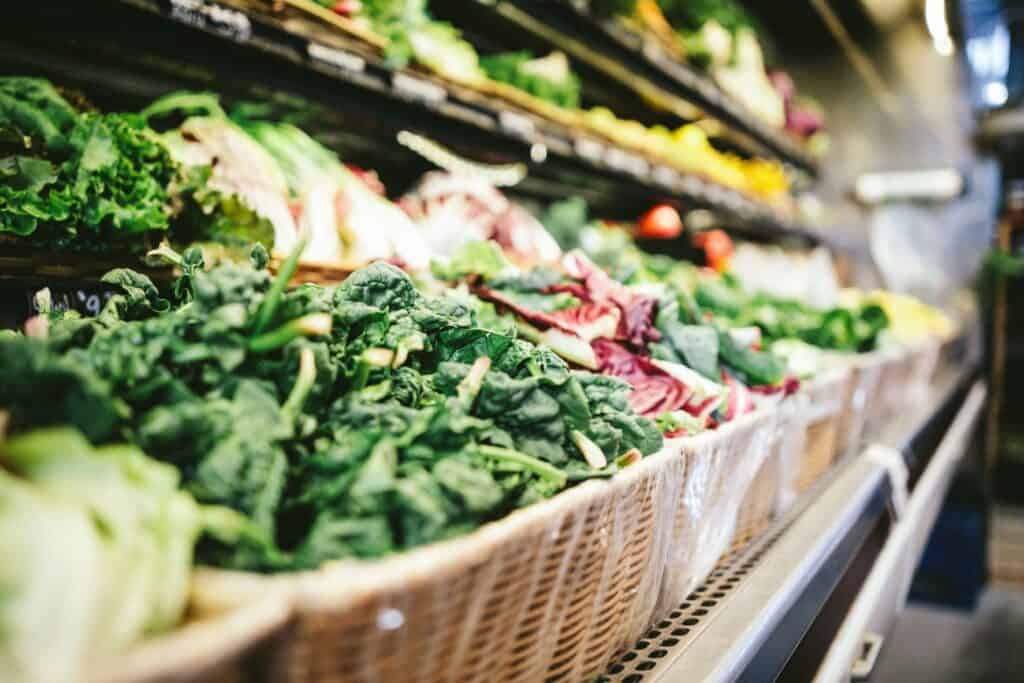
Resetting the Palate
As a not-so-young adult, I am still discovering and rediscovering veggies I never tried or once hated. At this point in life, I like almost every vegetable after not being a huge veggie eater as a kid or young adult.
Most recently, I have grown to love olives, celery and carrots—it literally took 35 years! Palates can be reset and change. You really just have to try new foods and begin eliminating fake foods. Healthy foods beget healthy foods, for sure!
Get Your Spouse/Entire Family on Board.
This goes back to the first point. Getting your kids to eat real food can be really challenging if your spouse or someone else in your home is not on board. I totally think that’s a battle worth taking on, but if it just can’t be won, then see if you can make some arrangements.
This may mean keeping the junk food stash in his/her car or not grabbing McDonalds when the kids are in tow or whatever else you can come up with. Naturally, modeling good food choices is the most powerful thing we can do.
What about the grandparents?
While I used to stress more about what the grandparents fed my kids, I am a little laxer about that now for two reasons. The first is that life is short and grandparent time is so, so special!

The second is that my kids are old enough to think for themselves a little and follow some basic food rules when they are away from me. Mine both know they should likely only eat half of the candy bar if they don’t want a tummy ache or that they should probably turn down the 3rd cinnamon roll (possibly a true story!).
The most time my kids have ever spent with relatives has been once a week. If it’s more frequent for you, then it may be a bigger concern. Also, we are fortunate that our families are fairly respectful of our food choices. While they allow more treats than I do, they usually don’t get too, too crazy!
What to do about the old habits?
We’ve all done it! We’ve personally been clean eaters for over ten years, and we’ve still let many not so desirable habits sneak in. It would usually happen when we were trying to appease a child with something they enjoyed at school or with a friend or when our schedule was hectic. Life happens, but you always want to try to get back to the real-food basics.
Experts generally recommend to slowly and steadily change eating habits (especially when working with children). Any child would be traumatized if they went to bed eating McDonalds, chicken nuggets and goldfish and woke up to veggie trays, tilapia and almonds!
Some may prefer to focus on one bad habit at a time. Cut the fast-food, then the soda and then the ultra-processed snacks, etc. Others may prefer to work on one meal at a time instead. It will take some time and consistency, but eventually clean eating will be the norm. If this is going to be a BIG lifestyle change for you then consider calling a family meeting if your kids are old enough.
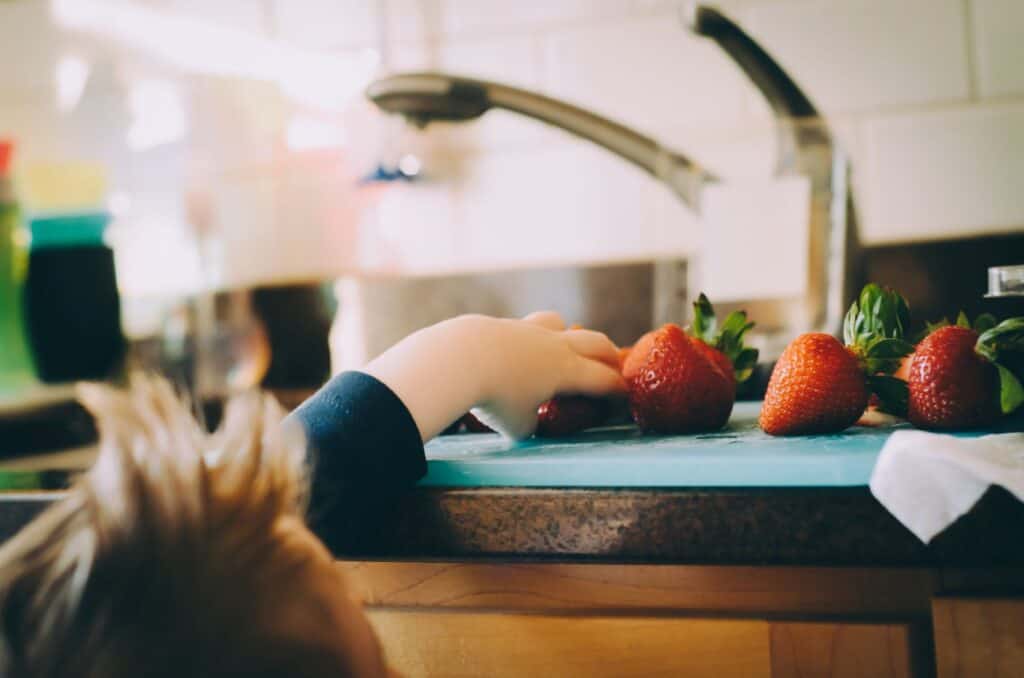
Teach Your Kids the Benefits of Real Food
As you try new foods, tell your kids what benefits the specific foods offer. Tell them how broccoli and carrots are good for the eyes and how spinach and blue berries are good for the skin. This can be helpful for kids of all ages. It’s so cute when they are little and take a big chomp out of a carrot, so they can see the ball better at their next t-ball game.
It’s also cool when kids get a little older and are exploring the world of science. My kids genuinely find it interesting when I present a fun food fact in a light-hearted way. On that same note, it’s not a bad idea to tell your kids the truth about foods that don’t make them feel their best.
For example, if they eat the whole portion of dessert, they will likely get a tummy ache and feel tired. No guilt or shaming—just truth.
If they don’t heed your advice the first time, well, sometimes real-world consequences can be excellent teachers. Obviously, this is age dependent. We wouldn’t want to serve our 2-year-old enough cake to give them a tummy ache, but our 10-year-old may be offered an oversized hunk at a birthday party.
Need Motivation? Count Sugar Grams!
This is eye opening! A friend of mine used to be pretty lax about all the treats her kids were given until she sat down one day and did the math. She realized that her child was easily taking in over 100 grams of sugar a day. Yikes!
The American Heart Association recommends no more than 25 grams per day for women and children—that’s less than a soda! It can be helpful to think of sugar intake in averages. Yes, have ice cream night and homemade muffins in the same week but aim for less than 15 grams on the other days. That might look like a serving of ketchup and a mini granola bar.
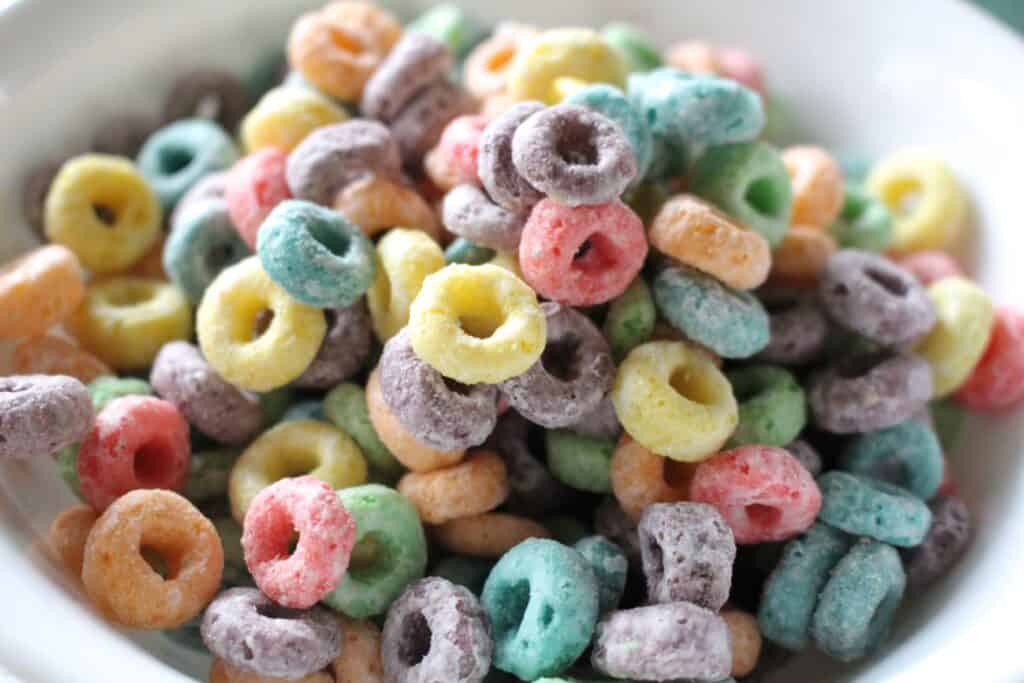
According to the Department of Health and Human Services, the average American ate only 2 pounds of sugar/per year 200 years ago. This number rose to 123 pounds/per year in 1970. Now, the average American consumes almost 152 pounds of sugar in a year or 3 pounds in just one week! Because sugar has become so prevalent in our culture, it’s up to us to limit it.
Real Food Kids—The Wrap Up
U.S. children are suffering tremendously due to poor diet. 1 in 5 children are now obese. Many more suffer from chronic constipation, migraines/headaches, ADD/ADHD, poor sleep and frequent sick days. More often than not, these issues and many more can be greatly impacted by an awesome diet.
If you are a beginner, just being here and starting to pay attention is a great way to start. Or maybe you consider yourself a pretty healthy mom, but now you’re thinking about all of the little habits that have crept in. It happens and when it does, we have to refocus. Trust me, when I say I am constantly refocusing on this!
Let’s give our kids the guidance and support they need in this area. Let’s create real food kids and help them thrive!